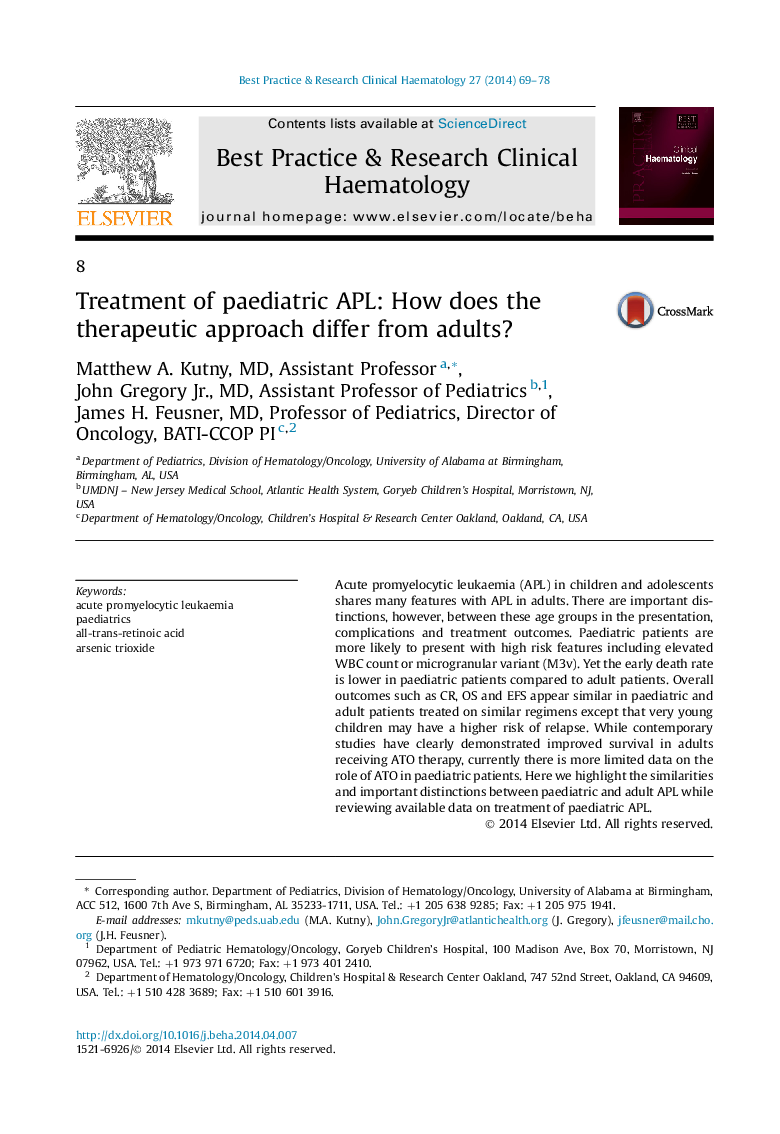| Article ID | Journal | Published Year | Pages | File Type |
|---|---|---|---|---|
| 2100684 | Best Practice & Research Clinical Haematology | 2014 | 10 Pages |
Acute promyelocytic leukaemia (APL) in children and adolescents shares many features with APL in adults. There are important distinctions, however, between these age groups in the presentation, complications and treatment outcomes. Paediatric patients are more likely to present with high risk features including elevated WBC count or microgranular variant (M3v). Yet the early death rate is lower in paediatric patients compared to adult patients. Overall outcomes such as CR, OS and EFS appear similar in paediatric and adult patients treated on similar regimens except that very young children may have a higher risk of relapse. While contemporary studies have clearly demonstrated improved survival in adults receiving ATO therapy, currently there is more limited data on the role of ATO in paediatric patients. Here we highlight the similarities and important distinctions between paediatric and adult APL while reviewing available data on treatment of paediatric APL.
